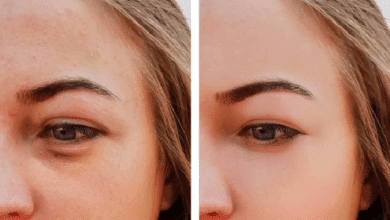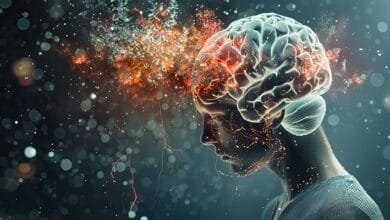An Examination of Different Massage Therapy Approaches for Optimal Results

In order to manage physical discomfort, reduce stress, and enhance general wellness, massage therapy has developed into a multifaceted and well-respected practice. Massage therapy can be customized to meet each person’s needs thanks to its wide range of techniques and approaches, enabling them to discover the most effective method that will benefit both their body and mind. This article looks at several approaches to massage 부산출장마사지 treatment and how to use them to achieve optimal results for both physical and mental health.
Swedish Massage: Benefits for Circulation and Relaxation
One of the most popular and well-known types of massage therapy is Swedish massage. Long, flowing strokes are mixed with light kneading, tapping, and friction to help release tension in the muscles, calm the body, and enhance Circulation. For those wanting general relaxation or stress and muscular soreness treatment without the severity of deep pressure, this technique is ideal.
Optimal Results Relaxation: By soothing the nervous system and promoting the release of endorphins, Swedish massage encourages deep relaxation. This is perfect for people with high-pressure lifestyles as it helps lower anxiety, tension, and mental exhaustion.
Improved Circulation: Swedish massage’s long, sweeping strokes enhance blood flow, which boosts the body’s supply of oxygen to the muscles and tissues. This promotes the body’s natural healing process and helps the body recuperate from physical exertion.
Muscle Flexibility: Swedish massage helps maintain muscle fluidity and skill, which is especially advantageous for people who lead sedentary lifestyles and are trying to improve their muscle flexibility and mobility.
Deep Tissue Massage: Addressing Tension in Chronic Muscles
Deep tissue massage is especially beneficial for people with chronic pain, tension, or injuries because it targets the deeper layers of muscle and connective tissue. To break up scar tissue, loosen tense muscles, and increase mobility, the therapist applies firm pressure along with steady, purposeful strokes.
Best Outcomes Chronic Pain Relief: A deep tissue massage is an excellent option for people with fibromyalgia, arthritis, or other chronic pain disorders. It also relieves tension in the muscles. Deep tissue massage relieves stress by focusing on particular muscle groups and pain regions that build up over time.
Improved Range of Motion: People with postural imbalances, injuries, or restricted range of motion as a result of overuse can benefit most from this technique. More flexibility and pain alleviation are made possible by the deep pressure’s ability to break adhesions between muscles.
Enhanced Recovery: By increasing blood flow to injured areas and lowering inflammation, deep tissue massage can hasten the healing process for athletes or anyone suffering from injuries.
Massage for Sports: Enhancing Athletic Performance
Sports massage was created with athletes in mind and is aimed at reducing the risk of injury, enhancing performance, and facilitating the healing process following physical activity connected to sports. Depending on the sport, different techniques are employed in sports massage; nonetheless, they typically incorporate aspects of deep tissue massage, Swedish massage, and stretching.
Best Outcomes Injury Prevention: Sports massage helps avert injuries brought on by overuse or incorrect movement patterns by treating muscle imbalances. This is particularly beneficial for athletes who repeatedly strain particular muscle groups.
Faster Recovery: Following exercise or competition, sports massage helps to relieve soreness and stiffness in the muscles. The clearance of metabolic waste and increased blood flow hasten the body’s natural healing process.
Improved Flexibility and Performance: Sports massage enhances muscular coordination and flexibility through focused stretching and manipulation, which enhances overall athletic performance and lowers the chance of injury.
Muscle Knot Release with Trigger Point Therapy
In order to cure “knots” or hyperirritable regions in muscles that refer pain to other parts of the body, trigger point therapy is used. If left untreated, these knots, sometimes referred to as trigger points, can result in persistent pain and discomfort. In order to relieve the tension and reduce the referred pain, trigger point therapy includes applying pressure directly to these points.
Best Outcomes Alleviating Chronic discomfort: Trigger point therapy is frequently beneficial for those with chronic problems, including tension headaches, shoulder discomfort, or lower back pain. Long-term relief is achieved by significantly reducing the referred pain by releasing trigger points.
Improved Muscle Function: By releasing trigger points, muscles can work more efficiently, which increases their range of motion and flexibility. This treatment can have long-lasting effects on those who have trouble moving or using their range of motion because of muscle knots.
Reduced Muscle Tension: Using trigger point therapy to treat and lessen tense muscles brought on by stress or overuse is a good idea. Frequent exercises can help maintain muscular health by preventing the development of new trigger points.
Releasing the Connective Tissues with Myofascial Release
The goal of myofascial release is to relieve tension from the fascia, the connective tissue that envelops and supports muscles in the body. Stress, injuries, or bad posture can cause the fascia to become taut, which can limit movement and cause persistent pain. Using this technique, the therapist releases and stretches the fascia to increase flexibility and lessen discomfort.
Optimal Results Reduction of Pain: Myofascial release is very beneficial for people with persistent pain disorders like fibromyalgia or chronic fatigue syndrome. This therapy relieves pain and suffering throughout the body by treating fascia limitations.
Enhanced Flexibility: Impaired posture and restricted mobility might result from taut fascia. By releasing tension and gently stretching the fascia, myofascial release facilitates the restoration of flexibility by increasing the range of motion.
Enhanced Recovery: Myofascial release can hasten healing and lessen the creation of scar tissue in people recuperating from surgery or traumas. Additionally, it maintains the general health of the muscles by preventing additional fascia constriction.
Shiatsu: Equilibrating the Flow of Energy:
Similar to acupressure, shiatsu is a traditional Japanese massage method that includes applying pressure to particular body locations. Shiatsu aims to balance Qi, or the body’s energy flow, and enhance general health and wellbeing. The therapist stimulates the body’s energy flow and removes obstructions by applying pressure with the fingers, palm, and thumb along its meridian lines.
Optimal Results Distress and Unwinding: Shiatsu is the perfect choice for anybody looking for a holistic, all-natural method of unwinding and relieving stress. Shiatsu lowers stress and anxiety by regulating the body’s energy, fostering emotional stability and mental clarity.
Improved Energy Levels: Shiatsu can stimulate the body’s energy flow, improving mental clarity and physical vitality in people who are feeling sluggish or exhausted.
Improved Digestion and Circulation: The rhythmic pressure used in a shiatsu massage promotes better digestion and general organ function by increasing circulation.
Reflexology: Hands, Feet, and Ears as Healing Tools:
The foundation of reflexology is the idea that particular locations on the hands, feet, and ears correlate to various bodily systems and organs. Reflexology stimulates the body’s natural healing mechanisms and improves general health by applying pressure to specific sites.
Optimal Results Decreases Stress: Reflexology is a great way to lower stress and promote relaxation. Deep relaxation and mental calmness are achieved by the stimulation of the parasympathetic nervous system through therapy.
Improved Organ Performance: Reflexology helps the internal organs perform better by focusing on particular reflex sites. This helps to relieve headaches, hormone imbalances, and digestive problems.
Boosts Circulation: Reflexology promotes general health and healing by increasing blood flow to various body areas. Frequent sessions help 창원출장마사지reduce edema and other circulation-related issues like cold extremities.
Final Thought: Selecting the Optimal Approach for the Best Results
There is no one-size-fits-all approach to massage therapy; rather, the ideal technique for reaching your specific goals and needs will rely on these. There is a massage therapy approach that can work best for relieving chronic pain, enhancing athletic performance, or just lowering stress levels. With the knowledge of the various accessible techniques and their advantages, you can collaborate with a professional therapist to create a customized treatment plan that targets your specific issues and enhances general health and wellbeing.
Including frequent massage therapy in your wellness regimen will assist your physical, mental, and emotional wellbeing in the long run and enhance your quality of life.



